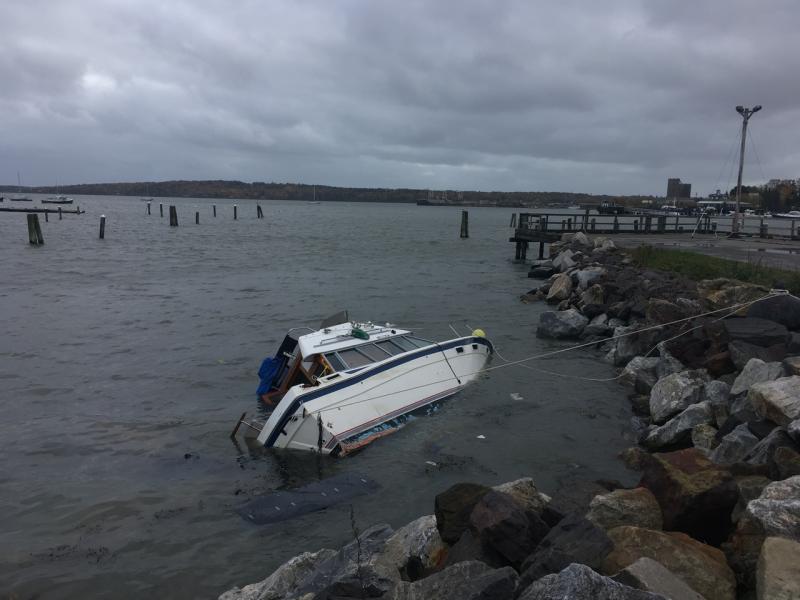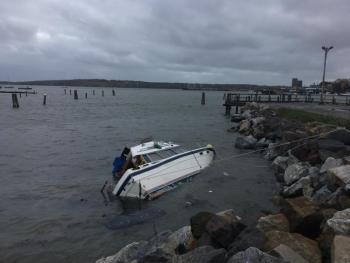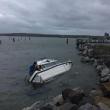Situational awareness, losing power, and the effectiveness of a well-timed Mayday
In my work at a local nautical publishing house, I had the chance to produce a book called Bridge Resource Management for Small Ships, by Dan Parrot, an instructor at Maine Maritime Academy. Essentially it’s a treatise on situational awareness as it pertains to running a merchant vessel. (The bridge in the title refers to the bridge of a vessel, not a massive steel span.)
As a life-long sailor I’ve known this notion of paying attention to what’s happening at any given moment as seamanship. I was taught from an early age to mind how I stepped into a dinghy. I was also told to keep a constant lookout. And that doesn’t mean to just what’s ahead. It means checking lots of things, like taking time to inspect the rigging—looking daily at the deck turnbuckles, checking for chafe on a halyard—and making sure there’s exhaust when I start the diesel. The basic teaching is to never stop paying attention when you’re in command of a vessel. (Passengers do well to pay attention, too.)
Before I worked on the book I hadn’t known that the shipping world had named this attitude of attention as situational awareness. It’s a good phrase—one that brings to mind traits like mindfulness, or the oft-heard instruction to simply be present.
The recent slamming of a nearly 1,000 foot container ship into the Francis Scott Key Bridge will no doubt be used as an instructional lesson in bridge resource management classes for decades. The incident fits well within the “Swiss cheese” accident metaphor made famous by James Reason: that while complex systems often have several barriers in place to prevent mistakes, sometimes the weaknesses in all those systems line up, and disaster strikes—and it’s rare—the same way it’s rare that all the holes in a stack of Swiss cheese slices line up.
But in Baltimore recently several factors lined up.
In Bridge Resource Management the author lists the following human factors aboard ship that can lead to mishaps: Overreliance, Distraction, Stress, Fatigue, Complacency, and Transitions.
The master mariner’s role is to create a culture that minimizes the chances of these factors lining up.
While I’ll make no attempt to analyze the Dali accident, it did occur to me as I watched the horrifying slow-motion wreck unfold that I was watching something beyond just this one accident.
All the factors that author Parrot calls out leading up to accidents sounds like common conditions in our western culture.
I got to thinking that the Dali incident might help us better understand another concurrent catastrophe.
The vessel left in a calm evening, presumably with its pilot and captain and full crew aboard. The boat was carrying 4,700 containers—material goods to be off-loaded someplace far from Baltimore—and 1.5 million gallons of fuel oil. That’s a heavy load. In a normal trip the engines burn that fuel to spin a propeller(s) that pushes the long, heavy vessel forward.
But something happened aboard Dali. Lights went out. And came back on. Black smoke billowed from the smokestacks in bursts like Mike Mulligan’s famous visage.
Apparently they lost power. And the Dali, heavily laden, just started to drift. If you’ve ever put your car in neutral, taken off the brake, and sat behind the wheel as it rolled down the hill, you know just how odd it is to sit helpless in a heavy quiet box, coasting. Power steering is gone—but at least in a car you can stop your descent with your brake.
Ships don’t have brakes. There’re only a few ways to stop large vessels. Some have suggested that maybe the Dali officers issued the command to go “full astern”—a move that puts the engines in reverse. It certainly is a tactic—unfortunately because of a thing called “prop wash” it can often make the vessel drift off course to one side or the other.
We don’t know exactly what happened on the Dali, and my aim isn’t to figure that out. It’s only to observe that we watched an extremely large, heavy object drifting slowly out of control. They’d dropped an anchor over the side to stop them—it didn’t work. Black smoke billowing indicated the promise of fossil fuels to render help. That didn’t work, either.
What did work, in ways far beyond we can ever imagine, was the radio operators’ quickly timed “Mayday, Mayday, Mayday”—the universal nautical cry for help.
That distress call was heard, and it got transmitted to public safety, who got it to folks on Francis Scott Key Bridge, who scrambled to stop vehicles from traveling across the steel span.
That urgent voice of distress saved dozens of lives. It’s tragic that the dedicated bridge workers, presumably not in their vehicles as they operated the pothole fixing equipment, had no easy way to heed the call. They were the vulnerable ones. We presume at least six of them perished. Some of them may have even seen the ship careening toward them and guessed what was going to happen.
The mariners couldn’t stop Dali once it lost engine power. All 1,000 feet of Dali was out of human control. The laws of physics took over—things in motion tend to stay in motion. We watch it unfold oh so slowly, and we’re amazed when the whole bridge collapses in both directions after Dali’s impact.
It left a shocking scene: the bridge crumpled like a child’s erector set over the bow of the Dali. Those colorful containers—our material desires—stacked like children’s blocks after a sibling’s errant kick.
The whole accident is a simple, shocking metaphor: Our Earth, heavily laden with 8 billion plus people and all their material desires drifting toward a catastrophe, the laws of atmospheric science fully in control. We billow fossil fuels in an attempt to prevent impact.
We don’t have a brake, either.
The climate scientists and advocates are broadcasting their maydays.
Is there any one listening?
Molly Mulhern lives in Camden





























